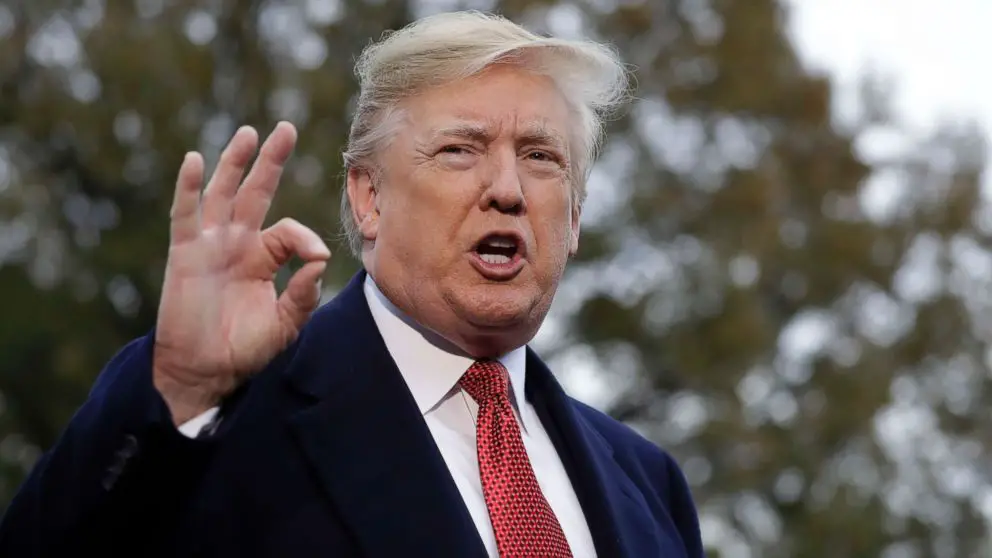Sure, it’s early, and the Democratic field is still taking shape, no primary votes have been cast, and no debates have taken place. However, we can learn a lot about the prospects of a President’s chances for re-election by looking at the national economic indicators. As has been the case in modern Presidential history, there are a few key data points that cut through opinion polls and conventional wisdom to provide a deeper understanding of whether a President stands a shot of winning a second term.
Politico shocked some readers yesterday with a headline that garnered a lot of attention: “How Trump is on track for a 2020 landslide”
In the article, the writer explains how a model maintained by the economist, Donald Luskin, which predicted Trump’s victory in 2016, is heavily pointing to Trump’s re-election in 2020 based on the same numbers:
“The economy is just so damn strong right now and by all historic precedent the incumbent should run away with it,” said Donald Luskin, chief investment officer of TrendMacrolytics, a research firm whose model correctly predicted Trump’s 2016 win when most opinion polls did not. “I just don’t see how the blue wall could resist all that.”
Models maintained by economists and market strategists like Luskin tend to ignore election polls and personal characteristics of candidates. Instead, they begin with historical trends and then build in key economic data including growth rates, wages, unemployment, inflation and gas prices to predict voting behavior and election outcomes.
Yale economist Ray Fair, who pioneered this kind of modeling, also shows Trump winning by a fair margin in 2020 based on the economy and the advantage of incumbency.
“Even if you have a mediocre but not great economy — and that’s more or less consensus for between now and the election — that has a Trump victory and by a not-trivial margin,” winning 54 percent of the popular vote to 46 for the Democrat, he said. Fair’s model also predicted a Trump win in 2016 though it missed on Trump’s share of the popular vote.
Still, Luskin, Fair and other analysts who use economic data and voting history to make predictions also note that a sharp decline in growth and an increase in the unemployment rate by next fall could alter Trump’s fortunes.
This would indicate two things. The first is that Democrats must spend time illustrating how the economy appears to be booming based on some conventional numbers, but too many people are being left behind by it. That can be a hard sell, but it’s not impossible, and the Democratic field is already forming their talking points along those lines.
Second, Donald Trump must be trusted to maintain this advantage without making unforced errors between now and Election Day in 2020. As the story notes, we’re still awaiting the report from Robert Mueller, and there are dozens of other threads still dangling that could harm Trump or his close associates in some way between now and the election.
Furthermore, what if the tariff war between China and the United States turns bad and genuinely starts driving down our economic growth? Democrats would gladly take that opening to argue that fighting with our trade partners over trade deficits hurts us more than it helps.
What about Luskin’s actual model? Here’s some background on the data it’s based on:
“It would have to slow a lot to still be not pretty good,” Luskin said, adding that what really matters is the pace of change. Even if overall numbers remain fairly strong, a sharp move in the wrong direction could alter voting behavior.
Luskin’s current model — which looks at GDP growth, gas prices, inflation, disposable income, tax burden and payrolls — has Trump winning by a blowout margin of 294 electoral votes.
Luskin isn’t the only one looking at these types of models. Another analyst, Mark Zandi, Chief Economist at Moody’s Analytics, also sees a similar 2020 scenario:
At this point, Trump wins in all 12 — and quite comfortably in most of them. The Moody’s models look at economic trends at the state level.
“If the election were held today, Trump would win according to the models and pretty handily,” Zandi said. “In three or four of them it would be pretty close. He’s got low gas prices, low unemployment and a lot of other political variables at his back. The only exception is his popularity, which matters a lot. If that falls off a cliff it would make a big difference.” The Moody’s models look at economic trends at the state level and incorporate some political variables including a president’s approval rating.
The Moody’s approach performed well in recent presidential elections, but missed the 2016 result in part because it did not account for a potential drop in Democratic turnout in key swing states. Zandi is trying to correct for that now before rolling out a new model sometime this summer.
Trump’s approval rating currently sits at 42%, which has been very steady in recent months. He doesn’t seem to dip or rise from that number, meaning that most poll respondents are rather entrenched in either liking or hating the President. In fact, the 6-month trend has been to a low of 41% and a high of 44%, almost like clockwork.
Unless his numbers dip drastically, which would only happen if the majority of Republicans turned sour, the low forties seem to be his floor.
He’s unpopular with a large swath of the voting public, but the economy may be his savior in 2020 unless Democrats can rally the troops and make the case for change. Bill Clinton did it in 1992 and defeated a very popular George H. W. Bush. Democrats will need a compelling ticket and a well-developed plan of attack.
Donate Now to Support Election Central
- Help defend independent journalism
- Directly support this website and our efforts
